Nara: Top 15 Things to Do in 2025, World Heritage Sites, and Cuisine

Learn 15 things to see and do in Nara, including World Heritage temples and shrines, historic townscapes, and nature-rich destinations, with tips on access and hotels.
Nara: The Cradle of Japanese Culture
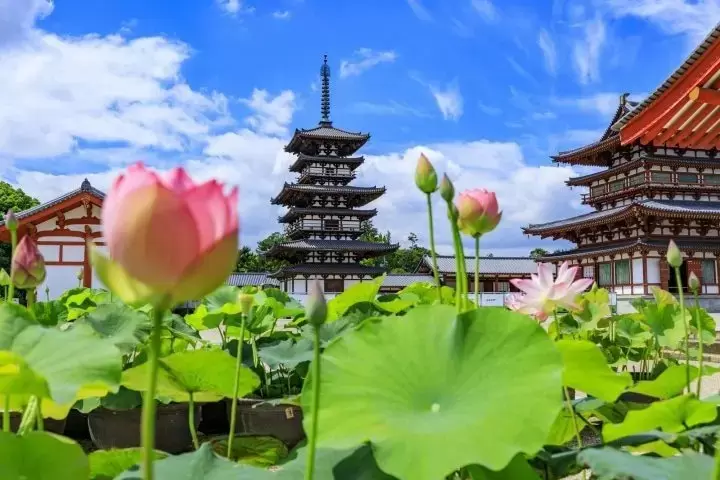
Nara, adjacent to Osaka and Kyoto, is an ancient city that flourished about 1,300 years ago during the Nara Period (710-784). The city has many historic highlights connected to Japanese culture and religion. These include Horyuji Temple, Japan's oldest Buddhist structure, and the Great Buddha of Nara statue seated inside Todaiji Temple.
Nara is an excellent day trip destination from Kyoto and Osaka. If you're visiting the Kansai region, please drop by for a memorable visit.
This article features 15 things to do in Nara along with information on Nara festivals, hotels, and travel routes.
The Best 15 Things to Do in Nara
1. Todaiji Temple: An Awe-Inspiring 15-Meter-Tall Buddha Statue
2. Nara Park: Enjoy Interacting with the Local Deer
3. Mount Wakakusa: Enjoy the Thrilling Spectacle of Wakakusa Yamayaki!
4. Kasuga Taisha: A Splendid Shrine with a Rich History
5. Mizuya Chaya: Savor Sweets Inside a Thatched-Roof Teahouse
6. Nara National Museum: Learn about Buddhist Culture and Art
7. Kofukuji Temple: See a World Heritage Cultural Site
8. Yakushiji Temple: Pray for the Good Health of Someone Special
9. Mt. Yoshino: Enjoy the View at Nara's Top Cherry Blossom Spot
10. Naramachi: Stroll Through a Town With a Charming Atmosphere
11. Horyuji Temple: Get a Close Look at Precious Cultural Assets
12. Nara Palace Site Historical Park: Recall the Glory of the Ancient Capital
13. Gyokuzoin Temple: Try Staying Overnight at a Temple!
14. Enjoy Sushi Wrapped in Persimmon Leaf: Try Nara's Specialty Dish!
15. Souvenir Hunting at JR Nara Station and Kintetsu Nara Station
Recommended Accommodations in Nara
How to Access Nara
1. Todaiji Temple: An Awe-Inspiring 15-Meter-Tall Buddha Statue!
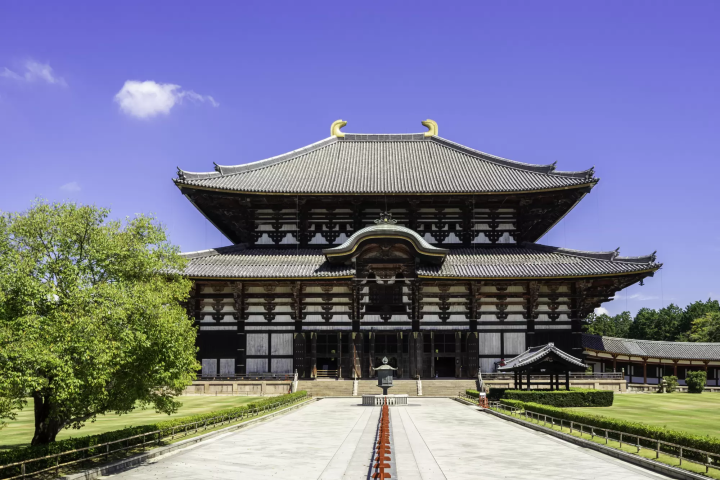

Todaiji Temple was built by Emperor Shomu around the middle of the 8th century to protect the country by borrowing divine power from the gods. Not only has it been designated as a World Heritage Site, but it also has many national treasures, such as buildings and Buddhist statues.
The main highlights are the Great Buddha Hall (Daibutsuden), one of the world's largest wooden structures, and the seated statue of Rushana Buddha (Rushanabutsu). The statue is about 15 meters tall and is an awe-inspiring sight for onlookers.
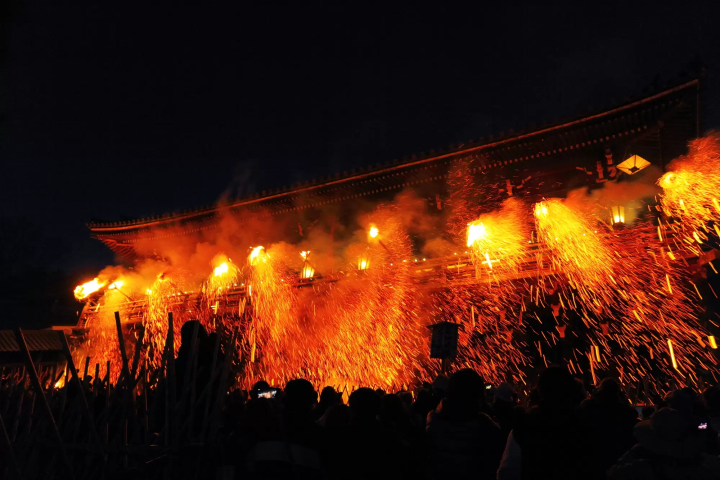
Todaiji Temple is also famous for Shuni-e (Omizutori). This is a traditional event held annually in March that signals the arrival of spring.
Held yearly for over 1,260 years, it is visited by many people who want to see the Nigatsudo Hall. This national treasure is illuminated by the flames of many torches during the Shuni-e Festival. Legend says that if one gets covered in sparks from a taimatsu torch, they'll be protected from sickness.
Todaiji Temple
Location: Nara, Zoshicho 406-1 GoogleMap
Admission: Adults 600 yen, Elementary School students 300 yen
Official website: Todaiji Temple
2. Nara Park: Enjoy Interacting with the Local Deer
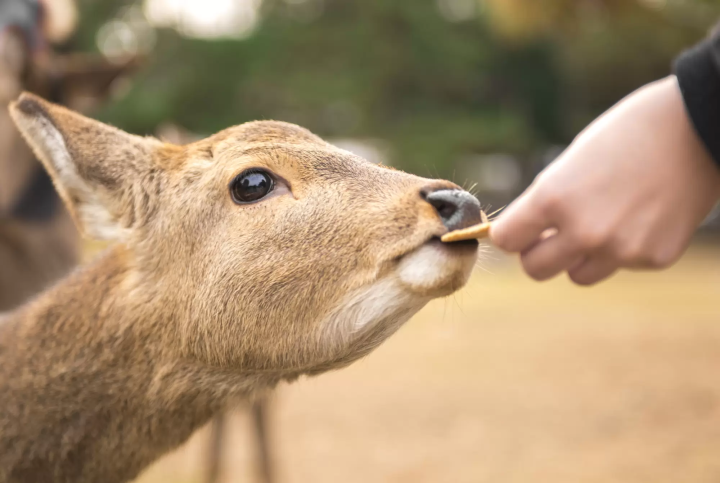
Nara Park is an sightseeing spot in Nara. The park is inhabited by "divine messengers"―1,400 deer treated with respect and loved by locals.
A hit attraction among visitors is shikayose, an event where deer are summoned with a horn. There's also the tsunokiri when deer antlers are trimmed for safety purposes. Visitors can feed the deer with rice crackers (shika senbei) sold in the park.
Nara Park
Location: Nara, Zoshicho 469 GoogleMap
Admission: Free
Official website: Nara Park
↑ Return to the top of article.
3. Mount Wakakusa: Enjoy the Thrilling Spectacle of Wakakusa Yamayaki!
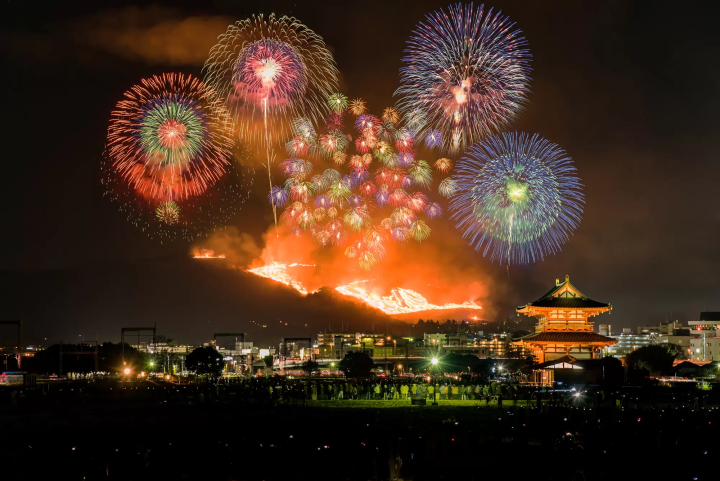
Mt. Wakakusa, a famous cherry blossom spot, is a 343-meter-high mountain in Nara Park that's covered with lush grass.
Mt. Wakakusa is home to Mt. Wakakusa Yamayaki, a traditional event held annually on the fourth Saturday of January to announce spring's early arrival in Nara.
During this event, Mt. Wakakusa is illuminated by bonfires with a pyrotechnical display featuring 600 fireworks. Mt. Wakakusa Yamayaki is held to commemorate the spirit of ancestors and other dearly departed souls. Event-goers also pray for Nara's disaster prevention and world peace.
We recommend getting a front-row seat at the foot of the mountain. Alternatively, you can sit at Kasugano-enchi Park Site or Ukigumo-enchi Park Site!
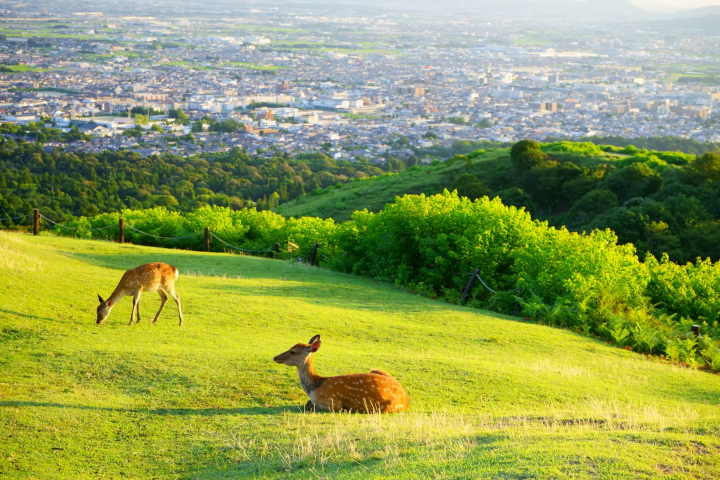
Mt. Wakakusa
Location: Nara, Zoshicho 469 GoogleMap
Admission: Adults 600 yen, Elementary School students 80 yen
Official website: Mt. Wakakusa
4. Kasuga Taisha: A Splendid Shrine with a Rich History

The grounds of Kasuga Taisha feature a distinct shrine building and red gate. This ancient Shinto shrine has a history dating back some 1,300 years. The shrine sits adjacent to Nara Park and was also designated as a World Heritage Site.
Another unique feature of Kasuga Taisha Shrine is Shikinen Zotai, a tradition where the shrine's main building gets repaired and refurbished every 20 years.
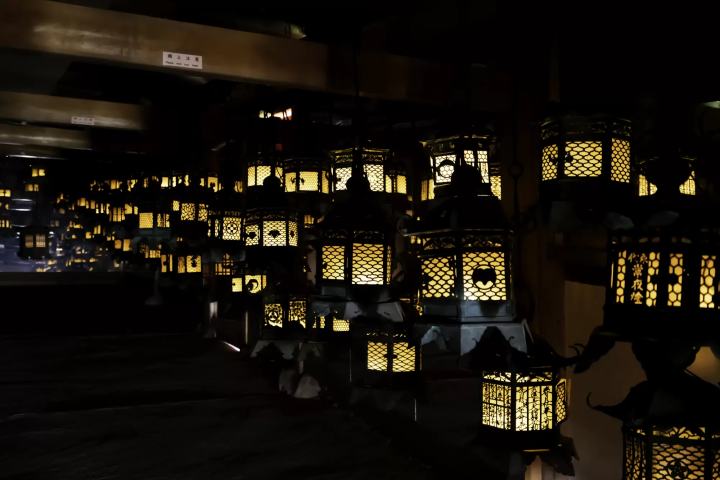
The shrine precincts are lined with over 3,000 toro lanterns. Every year in February and August, the lanterns are lit during an event known as Mantoro.

On the grounds of Kasuga Taisha Shrine is where a memorial festival called Nara Daimonji Okuribi is held.
Daimonji is an event where deceased souls are sent to the next world. A massive bonfire in the shape of the Japanese character "Dai" is lit on the side of the mountain (see photo above).
The Kyoto version of this event is famous. But it's also held annually in Nara on August 15 to commemorate the end of World War II, serving as a memorial for those who died in battle and a prayer for world peace.
Visitors can enjoy a beautiful view of this event from Nara Park's Ukimido Gazebo and Heijo Palace Ruins, about 20 minutes from Nara Park.
Kasuga Taisha Shrine
Location: Nara, Kasuganocho 160 GoogleMap
Admission: Free *Some buildings require a fee
Official website: Kasuga Taisha Shrine
↑ Return to the top of article.
5. Mizuya Chaya: Savor Sweets Inside a Thatched-Roof Teahouse
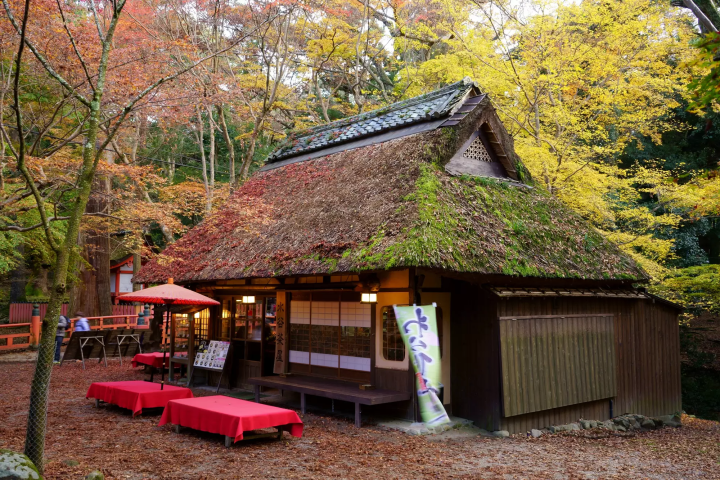
Mizuya Chaya―situated inside Nara Park along the approach to Kasugataisha Shrine―is a teahouse with a distinct thatched roof.
In addition to udon, the shop's menu offers various Japanese-style sweets (wagashi). This includes warabi mochi sprinkled with matcha (green tea powder), kuromitsu (brown sugar syrup), or kinako (soybean flour). There's also zenzai, a soup-like confection containing boiled red beans and mochi dumplings.
Visitors can sense Mizuya Chaya's old-fashioned atmosphere. The spring season brings fresh foliage, while picturesque autumn leaves envelop the shop in the fall.
If you're lucky, you can gaze at passing deer while enjoying a meal or snack at this special hideaway spot.
Mizuya Chaya Teahouse
Location: Nara, Kasuganocho 30 GoogleMap
Admission: Free
6. Nara National Museum: Learn about Buddhist Culture and Art

The Nara National Museum is located on the premises of Nara Park. This museum has a collection of about 1,800 Buddhist art pieces, including national treasures.
The museum is separated into four different galleries. One of these is the Nara Buddhist Sculpture Hall. This building is representative of the Meiji Period's Western-style architecture and is designated as an important cultural property.
In addition, visitors can enjoy cherry blossom viewing at the garden and teahouse during spring. There's also the museum gift shop lined with various souvenirs, including ones inspired by Buddhist statues. So by all means, please stop in for a visit at your leisure.
Nara National Museum
Location: Nara, Noboriojicho 50 GoogleMap
Admission: General admission 700 yen, University students 350 yen, Senior High School students and those under 18 years of age are free.
Official website: Nara National Museum
↑ Return to the top of article.
7. Kofukuji Temple: See a World Heritage Cultural Site
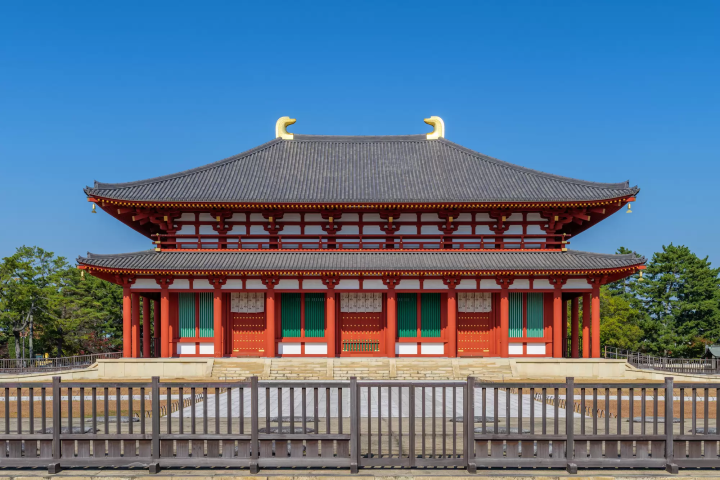
Kofukuji Temple sits in one corner of Nara Park. It has a history spanning 1,300 years and was designated as a World Cultural Heritage Site.
Kofukuji Temple is one of Nara's representative temples. Visitors can get a close-up look at several national treasures. There's a five-storied pagoda (goju-no-to) about 50 meters in height, the Eastern Golden Hall built by the emperor at the time, and the Statue of Ashura showing a deity who attained enlightenment.
Kofukuji Temple
Location: Nara, Noboriojicho 48 GoogleMap
Admission: Depends on the building
Official website: Kofuku-ji Temple
8. Yakushiji Temple: Pray for the Good Health of Someone Special

Photo by Pixta
Yakushiji Temple is a World Heritage Site built by the emperor to pray for the recovery of the empress, who was sick at the time. Even today, some 1,300 years after its construction, many people visit the temple to pray for good health and recovery from illness.
There are also many highlights to see. The East Pagoda (Toto) is the only structure to survive the temple's long history, a building dating from the Nara Period (710-794). There's also the Toin-do, a national treasure built by the emperor to allow his daughter to pray for the soul of her departed mother.
From early to late July, visitors can enjoy the beautiful sight of 200 potted lotus flowers in full bloom. If you visit Nara, stop by Yakushiji Temple to pray for the health of someone close to you.
Yakushiji Temple
Location: Nara, Nishinokyocho 457 GoogleMap
Admission: Depends on the season and the building
Official website: Yakushi-ji Temple (Japanese)
↑ Return to the top of article.
9. Mt. Yoshino: Enjoy the Sights at Nara's Top Cherry Blossom Spot!
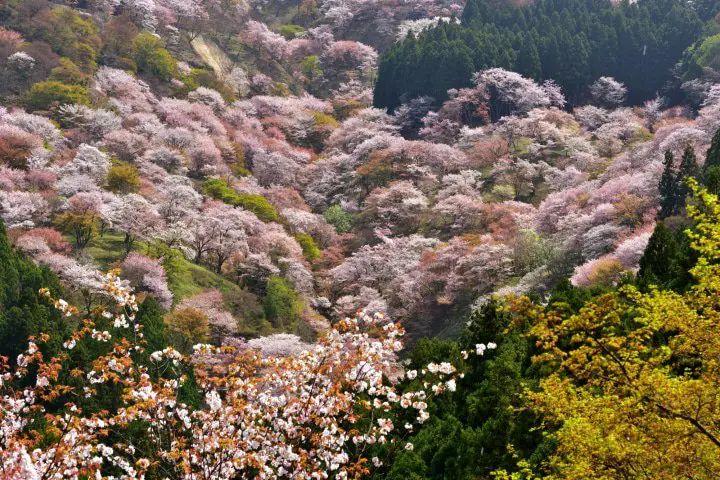
Photo by Pixta
Mt. Yoshino is known as Nara's top cherry blossom viewing spot. The entire mountain was designated as a World Heritage Site.
The peak blooming period depends on the type of cherry tree. But generally speaking, some 30,000 cherry trees of 200 varieties are in full bloom from the end of March until mid-April. It also introduces sites close to Nara Station, so be sure to check these out!
We also recommend hiking here during the fall while admiring the autumn foliage.
Mt. Yoshino
Location: Nara, Yoshinogun, Yoshinocho, Yoshinoyama GoogleMap
Admission: Free *Some buildings require a fee
Official website: Mount Yoshino (Japanese)
10. Naramachi: Stroll Through a Town With a Charming Atmosphere
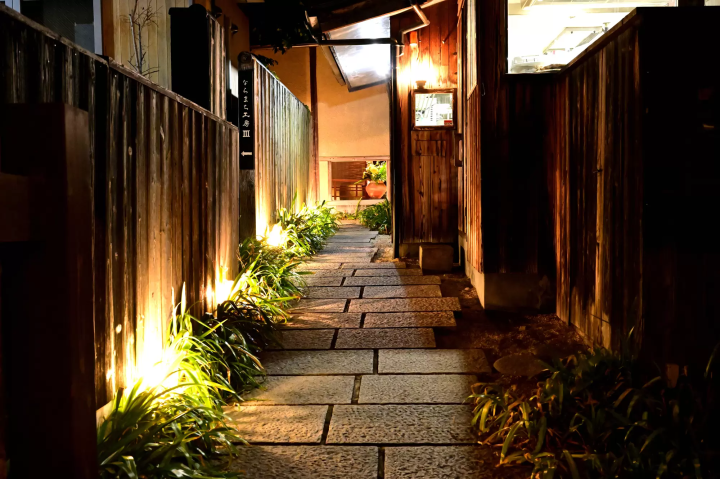
Photo by Pixta
Near the World Heritage Site of Gankoji Temple, you'll discover an area called Naramachi―a historic townscape from the Edo Period that remains to this day.
Many traditional machiya homes have been renovated into shops in Naramachi. So you can enjoy shopping and gourmet food in one go!
These shops include fashionable cafes, miscellaneous goods shops, and studios featuring traditional crafts and glass accessories. Please enjoy strolling through this town while soaking up its charming atmosphere!
Naramachi
Location: Nara, Chuincho 21 GoogleMap
Admission: Free *Some buildings require a fee
Official website: Naramachi
↑ Return to the top of article.
11. Horyuji Temple: Get a Close Look at Precious Cultural Assets
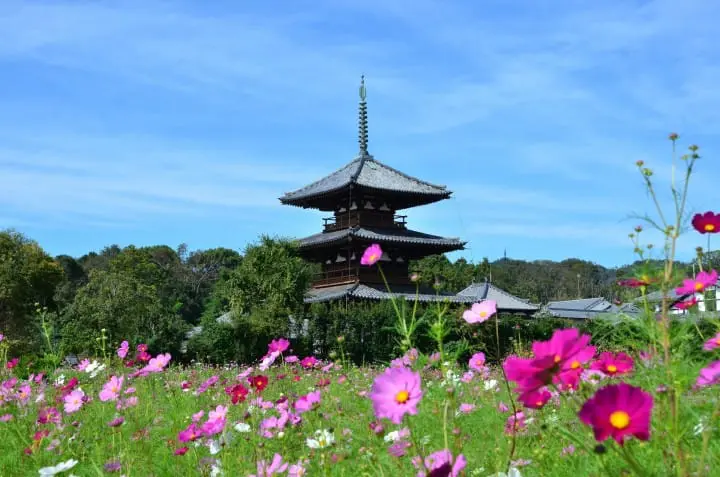
Horyuji Temple was built about 1,300 years ago. It's one of Japan's oldest Buddhist monuments and is designated as a World Heritage Site.
Horyuji Temple preserves the image of an ancient temple in the present day. Many cultural assets are housed here, including a Buddhist statue made between 700-800 and Buddhist crafts.

Photo by Pixta
Standing adjacent to Horyuji Temple is Chuguji Temple. This temple was built by Prince Shotoku, a famous member of the royal family during the Asuka Period (592-710).
You'll see a wooden statue of Miroku Bosatsu (Bodhisattva Maitreya, the Buddha of the Future). Sitting contemplatively with a right leg crossing over the left knee, this statue is reminiscent of Auguste Rodin's "Thinker." As a result, this statue is also called the "Oriental Poet."
Horyuji Temple
Location: Nara, Ikomagun, Ikarugacho, Horyujisannai 1-1 GoogleMap
Admission: General admission 1,500 yen, Elementary School students 750 yen
Official website: Horyu-ji Temple
Chuguji Temple
Location: Nara, Ikomagun, Ikarugacho, Horyuji 1-1-2 GoogleMap
Admission: Adults 600 yen, Junior High School students 450 yen, Elementary School students 300 yen
Official website: Chugu-ji Temple
12. Nara Palace Site Historical Park: Recall the Glory of the Ancient Capital
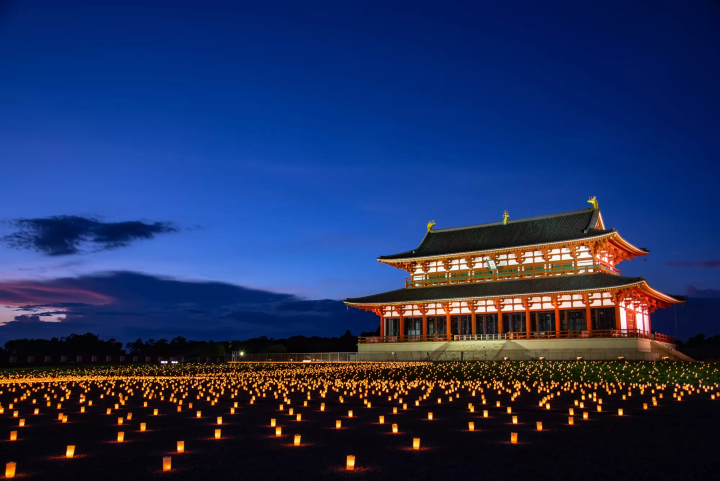
Photo by Pixta
Heijo-kyu was the emperor's residence, built in the heart of Heijo-kyo (present-day Nara City), Japan's capital during the Nara Period.
Today, the land where the residence once stood remains as Nara Palace Site Historical Park. You can feel the atmosphere reminiscent of a time when Nara prospered as the capital city. Many events are held throughout the year here as well.
Nara Palace Site Historical Park
Location: Nara, Nijo, Ojiminami 3-5-1 GoogleMap
Admission: Free
Official website: Nara Palace Site Historical Park
↑ Return to the top of article.
13. Gyokuzoin Temple: Try Staying Overnight at a Temple
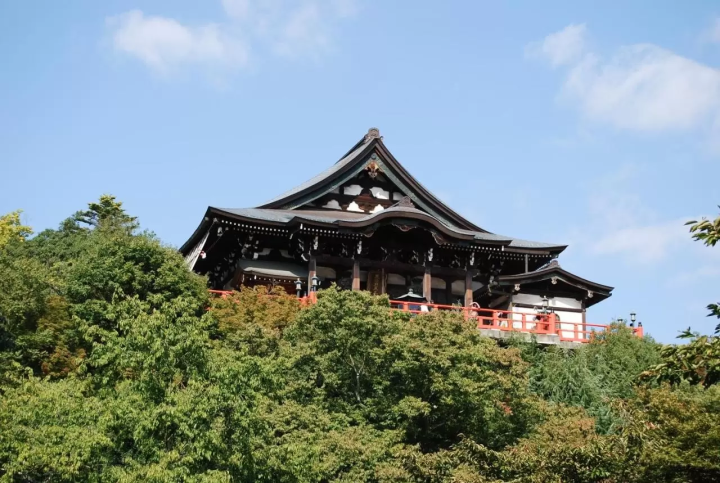
A custom known as shukubo has been passed down since ancient times in Japan. This custom allows regular worshippers to stay overnight at a temple.
Gyokuzoin, located on a mountaintop in Nara, is a temple facility that offers this shukubo experience.
Guests can have a wide range of experiences during their stay. For example, they can join a prayer session amidst the fresh morning air or try a shojin-ryori meal. Neither meat nor fish are included in accordance with the teachings of Buddhism. They can also participate in some training, including meditation (meiso).
Many overseas visitors have positively commented on how this experience became a precious memory for them. They also remark on how the Buddhist monks were polite and friendly. Why not book a stay at Gyokuzoin and partake in Japan's unique temple culture?

Gyokuzoin Temple
Location: Nara, Ikomagun, Heiguricho, Shigisan 2280 GoogleMap
Accommodation Fee: Adults-prices start at 11,000 yen (before tax) per person and include breakfast
Official website: Gyokuzoin Temple
Reserve a room at Gyokuzoin on Booking.com
14. Enjoy Sushi Wrapped in Persimmon Leaf: Try Nara's Specialty Dish!
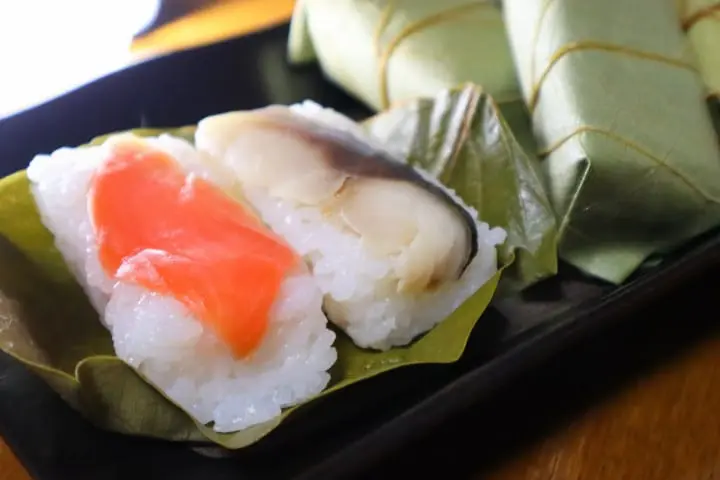
Kakinoha-zushi, sushi wrapped in a persimmon leaf, is one of Nara's local specialties. This unique recipe was handed down in Nara―a city surrounded by mountains where seafood is difficult to obtain.
Kakinoha-zushi features saba (salted mackerel) placed on top of vinegared rice and then wrapped in a persimmon leaf, which has antiseptic qualities (see photo above). This gem of a dish allows you to enjoy the tantalizing fragrance of the persimmon leaf with the sublime flavor of fish.
In addition to Izasa (Japanese), a famous shop known for its kakinoha-zushi, you can pick up this local specialty at department store food counters and souvenir stands.
↑ Return to the top of article.
15. JR Nara Station and Kintetsu Nara Station: Enjoy Souvenir Hunting!
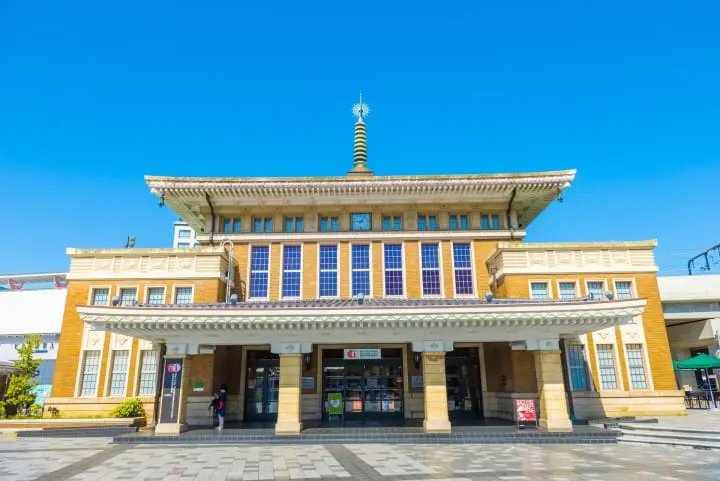
If you're in the mood for shopping near JR Nara Station, we recommend heading to VIERA Nara, located under the elevated train tracks.
In addition to restaurants and supermarkets, VIERA Nara is lined with shops specializing in souvenirs such as Nara Miyakoji and Nara Meihinkan (Japanese). This is an ideal spot for souvenir hunting.
VIERA Nara
Location: Nara, Sanjo, Honmachi 1-1 GoogleMap
Official website: VIERA Nara (Japanese)
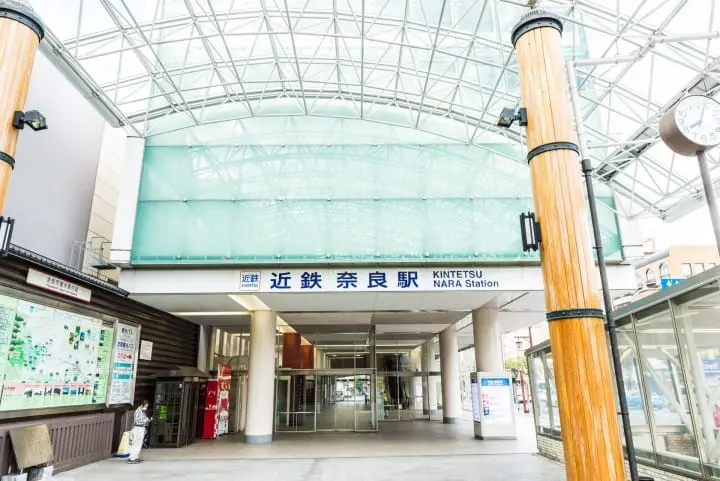
Time’s Place Nara is located inside Kintetsu Nara Station. At a shop called GOTO-CHI, you'll find various souvenirs, from miscellaneous goods to confectionery items.
There are also shops specializing in kakinoha-zushi and Japanese-style sweets (wagashi). You'll find the exact souvenir you've been looking for!
Time's Place Nara
Location: Nara, Nakasujicho GoogleMap
Official website: Time's Place Nara
↑ Return to the top of article.
Recommended Accommodations in Nara
It's possible to visit Nara on a day trip from Osaka and Kyoto. But we recommend staying the night and doing your sightseeing more leisurely.
Lodgings Offering a Luxurious Stay
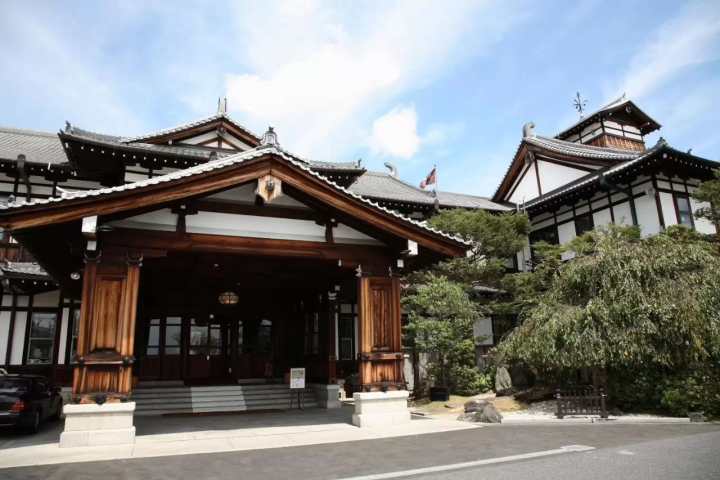
For visitors interested in spending a special time in Nara, we highly recommend the Nara Hotel, a long-established accommodation facility with a 100-year-old history.
With the hotel's 5-star service and impressive traditional Japanese architecture, guests can spend some special moments here.
The Nara Hotel is just seven minutes on foot from Nara Park, making it a convenient location for sightseeing as well.
Book a room at the Nara Hotel on Booking.com!
Book a room at the Nara Hotel on agoda!
Reasonably-Priced Hotels Near Nara Station
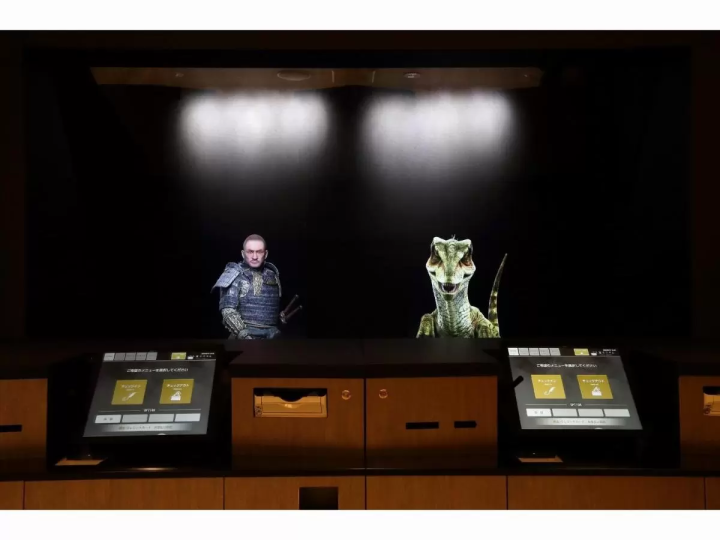
The Henn na Hotel Nara is just one minute on foot from Kintetsu Nara Station with reasonably-priced rooms starting from 4,400 yen per night.
We recommend this hotel for its 4-star accommodation facility at budget prices.
Book a room at the Henn na Hotel Nara on Booking.com
↑ Return to the top of article.
How to Access Nara
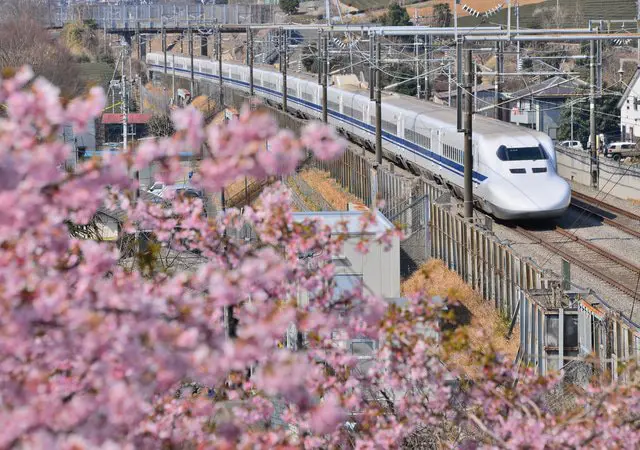
Accessing Nara From Tokyo
To reach Nara from Tokyo, travelers can hop on the shinkansen or train, which takes about 3 hours and 20 minutes. Alternatively, you can ride the highway or overnight bus, which takes up to nine hours.
Accessing Nara From Osaka and Kyoto
Next, we'll introduce how to access Nara from Osaka and Kyoto.
From Osaka
Traveling by train from Shin Osaka Station takes about one hour.
From Kyoto
When traveling by train from Kyoto, the required time is about 45 minutes. The following MATCHA article explains everything in more detail.
JR West Kansai Pass: Tour the Kansai Region at Bargain Prices!
The JR West Kansai Pass is handy for visitors interested in touring Osaka, Kyoto, Nara, Kobe, and other spots in the Kansai Region.
This one-day pass costs 2,400 yen (children are half price) and offers unlimited rides on Kansai Region JR trains.
To quickly understand how to use the pass and learn more about its features, please read the following MATCHA article.
Using Transportation in Nara
The Nara Bus Pass is convenient for sightseeing in Nara City.
Please take advantage of this pass when visiting places like Kasugataisha Temple, Todai-ji Temple, and Mt. Wakakusa.
Enjoy Your Trip to Nara
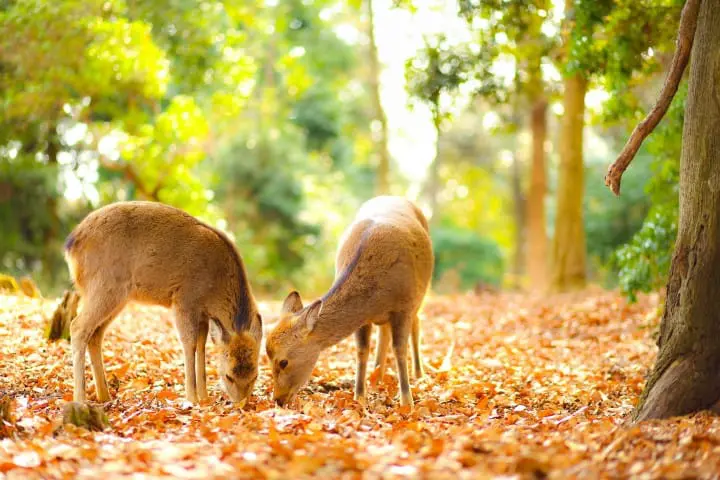
At one time, Nara flourished as Japan's capital. It has many World Heritage Sites and spots where you can sense Nara's long history.
In addition to the many places introduced in this article, there are plenty of shrines, temples, and museums that house interesting historical materials and exhibits.
When visiting Osaka and Kyoto, be sure to take a side trip to Nara and get in touch with Japan's impressive history.
Read also
Original writer of this article: Nico
Main image by Pixta
This is the official account of MATCHA's editorial department. Our articles feature useful travel information for visitors to Japan, from how-to guides to recommended places to visit.












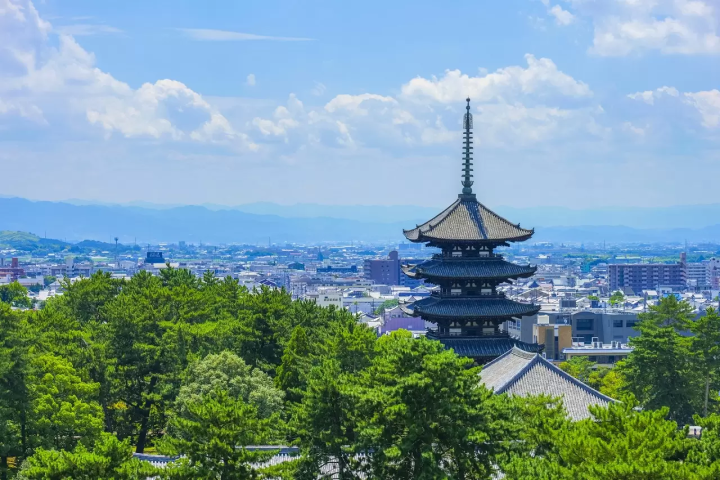





































![[Coupon Available] Attention Overseas Winter Sports Fans! Nagano's Sports Depot Has Evolved](https://resources.matcha-jp.com/resize/720x2000/2026/01/05-254819.webp)